Apple Silicon basically comes in two flavors. The first, the will get everyone excited is the professional version. This is the one that Apple puts on the MacBook Pro, the Mac Studio and one day, the Mac Pro. The one with the most I/O, the best graphic card and usually put in the best Macs Apple offers. The other is the “consumer” Apple Silicon. This is where Apple put in the MacBook Air and the iPad Pro. The one for the casual users.
Intel also has a branding strategy. There’s always the professional server grade Xeon processor for enterprise users. There’s also the “prosumer” Core i9 for the person who demands and is willing to pay top dollar to get the best of the best. But there’s also the “consumer” Intel version which is the Intel Core i7 and i5.
We love to look at the most expensive flavors that these tech companies have to offer, but I would argue that the most important product is the one that they target for volume. In this case, this would be the Apple M2 chip and Intel’s 12th generation Core i7 and perhaps more importantly Core i5. This is because these will be the bread and butter for these tech companies because it will be the top seller and biggest money maker for each company. We will make a comparison between those two processors to determine which is the better one.
We also compared this consumer Apple Silicon with Intel’s top dog, the 12th generation Core i9, which you can read here
M2
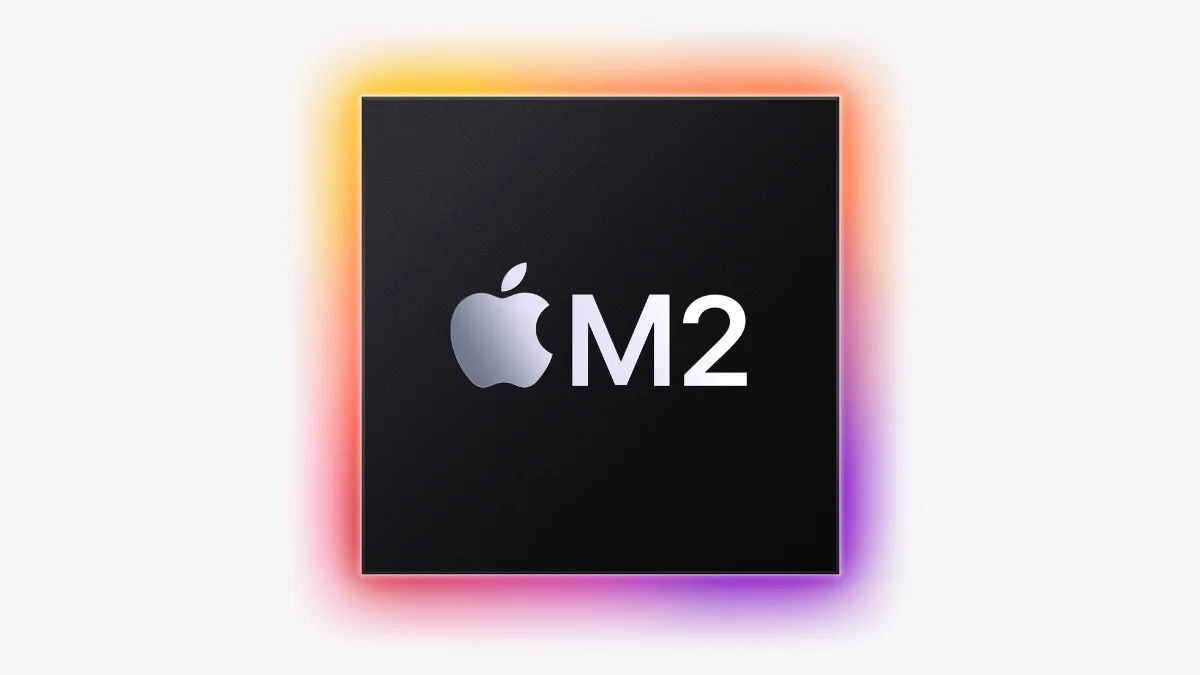
To see more in-depth view of the M2, read here
The M2 is the “consumer” Apple Silicon by the company. It might not be the most powerful in the line up, but it is the most important. This SOC will be on the majority of the Macs and the top end iPad, but it is cheap and flexible enough to be put on other devices in the future.
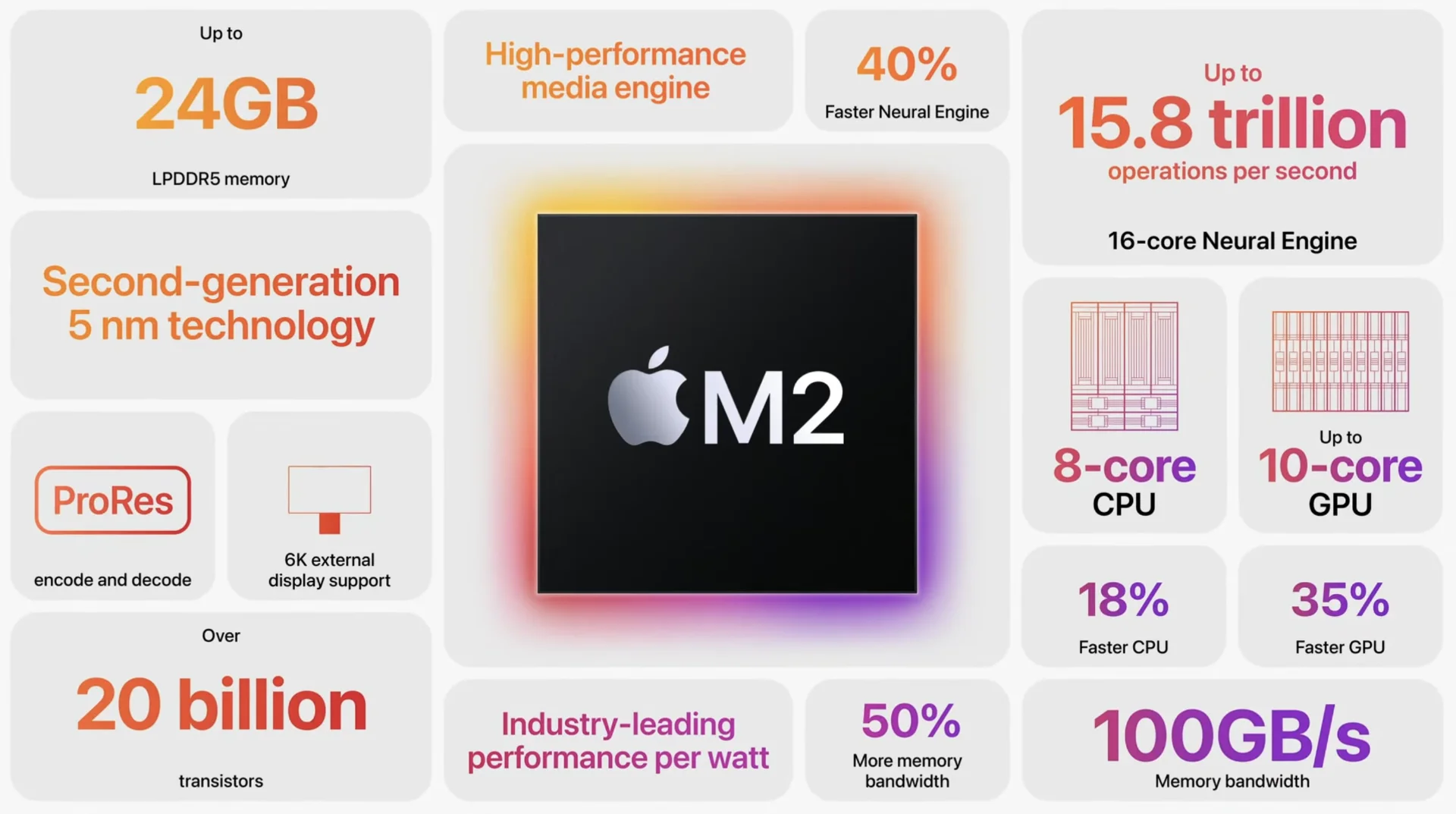
You can read more details about the M2 in our in-depth review, but overall, it borrows the same formula that made the M1 great and extends more features to make it better. While the compute core is a carry over from the M1, the graphics is where there is marked improvement. More cores and a media engine makes the M2 one “budget” chip power house.
Intel i7 and i5
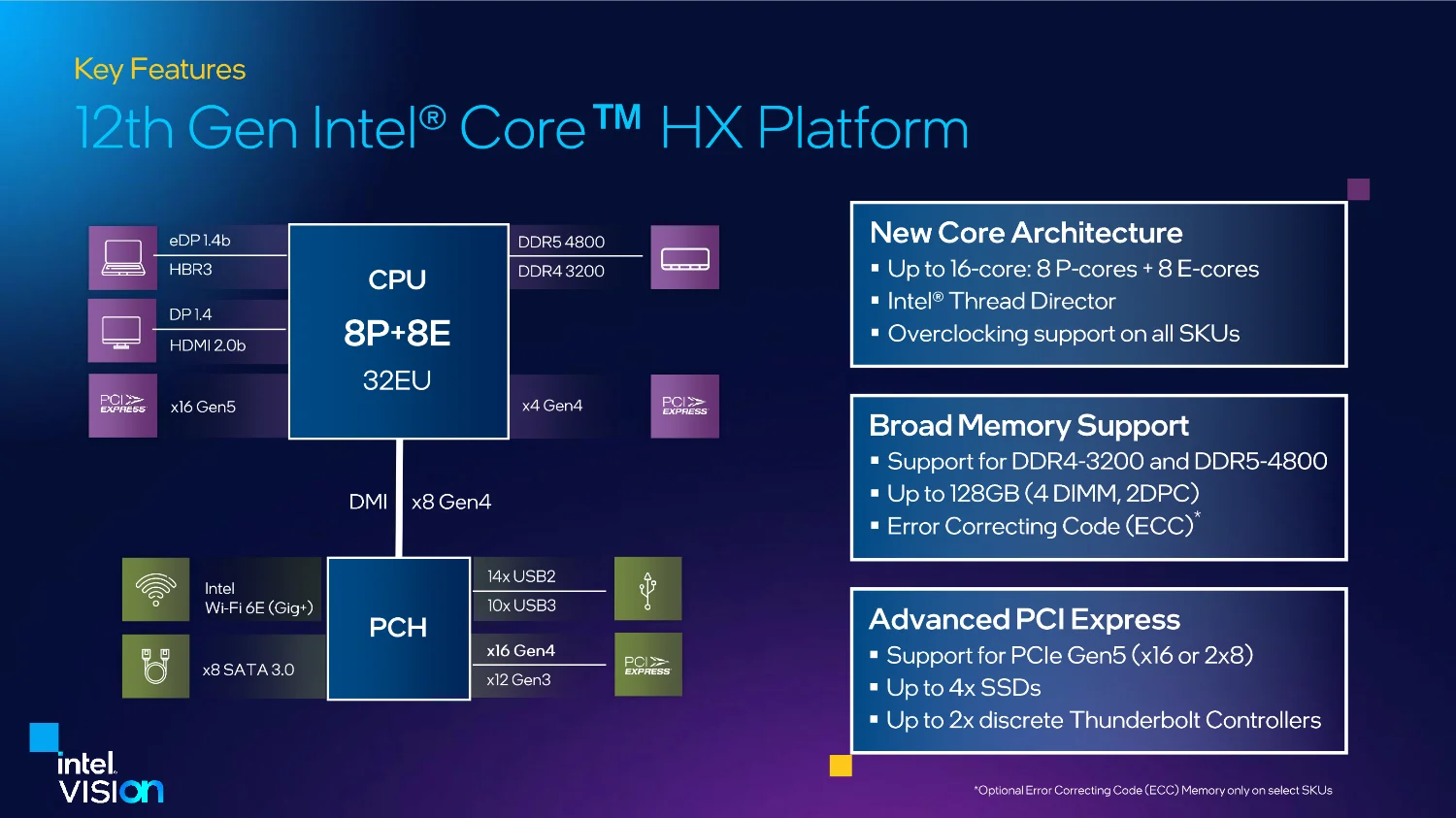
In Intel’s line up, the Core i9 is meant for the enthusiast that demands the very best. The i5 and the i7 are mid-tier chips that fill the role for consumers who demand great computing power and are willing to pay for a reasonable fee to acquire such technology. Intel is a chip merchant and has many variants of the same line, so to make it easy, we take the best of each line and compare that to the M2. For the i7, it’s the Core i7-12800HX while for the i5, it’s the i5-12600HX.
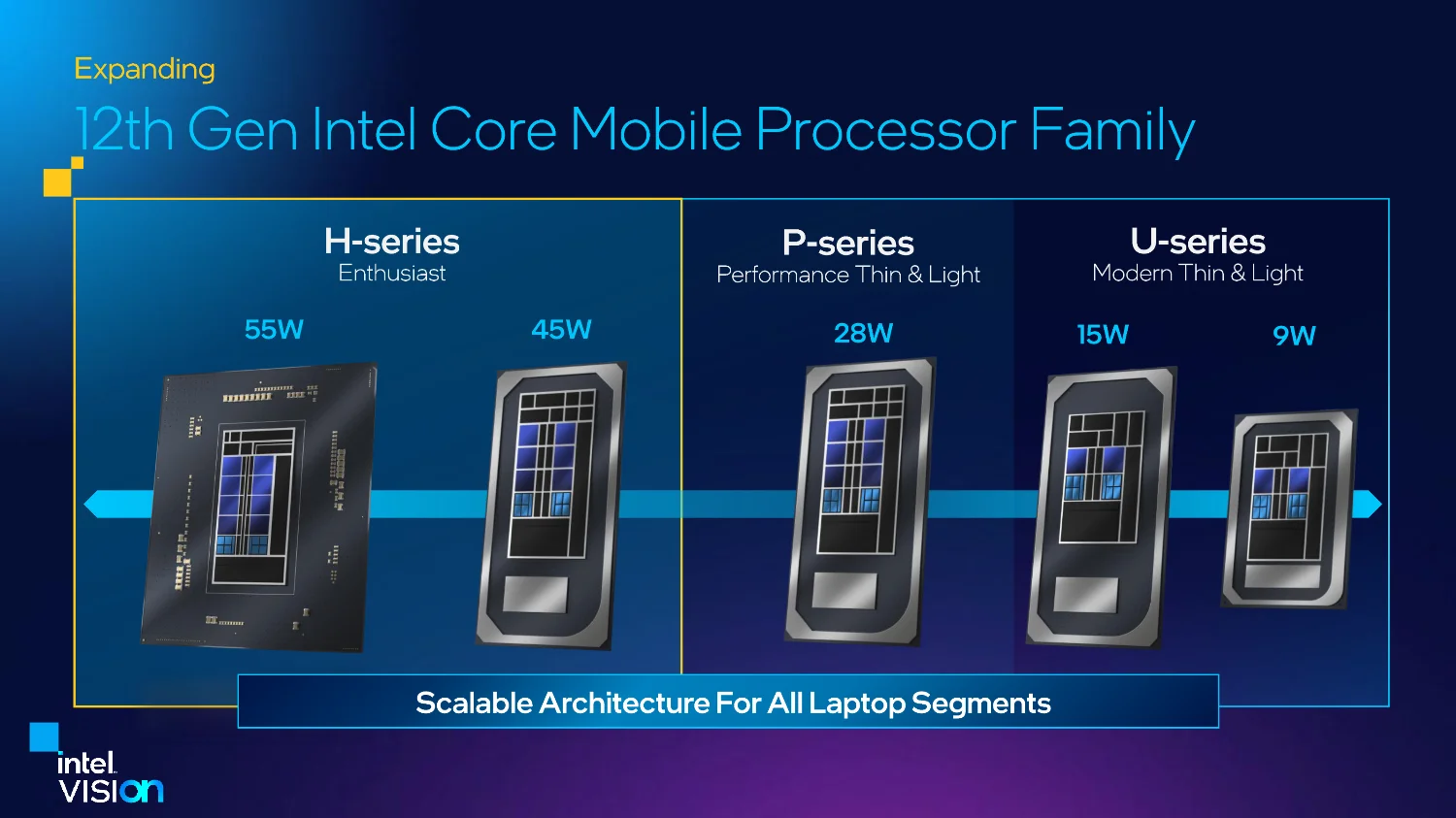
Just how it is the industry standard, the i5 and the i7 are cut from the same cloth. Afterall, engineering a microchip that has billions and billions of transistors is no easy task. Especially chips nowadays, which are much more than basic number crunchers. Other than basic math, chips are expected to do video, machine learning tasks, on the fly cryptography, handle I/O and many more.
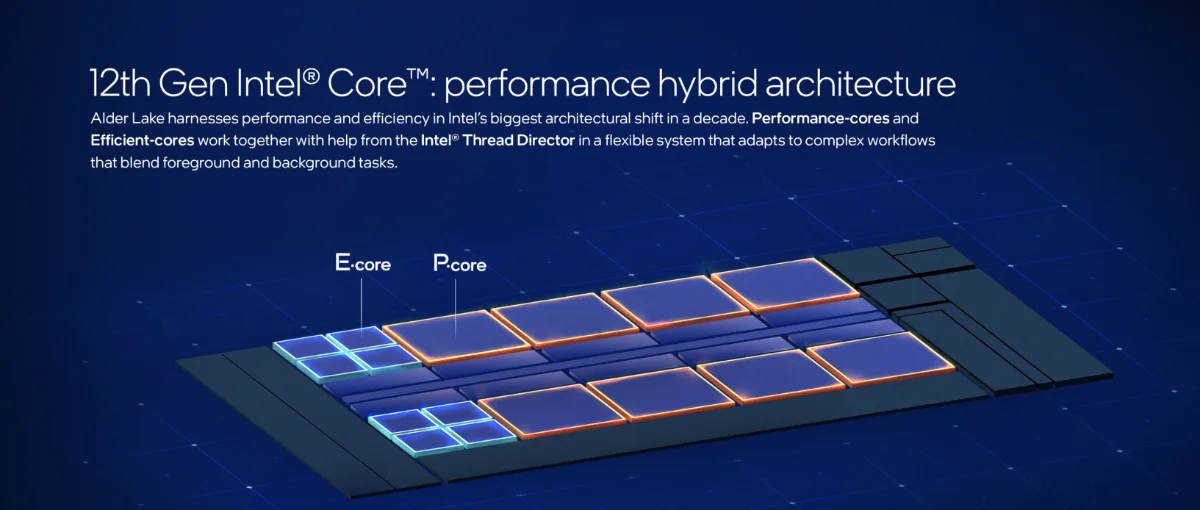
Since the 12th generation Intel Core, the compute core now comes in two flavors: efficiency and performance. Intel might copy Apple and other mobile chip’s homework, but that’s OK: best features will get propagated around, while the worst will be dropped, that is how it is in the tech world. The i7 comes with 16 cores (8 performance and 8 efficiency cores) while the i5 comes with 12 cores(4 performance and 8 efficiency cores). The performance cores have a higher base clock speed, bigger local cache, wider memory lane and most importantly, hyperthreading enabled.
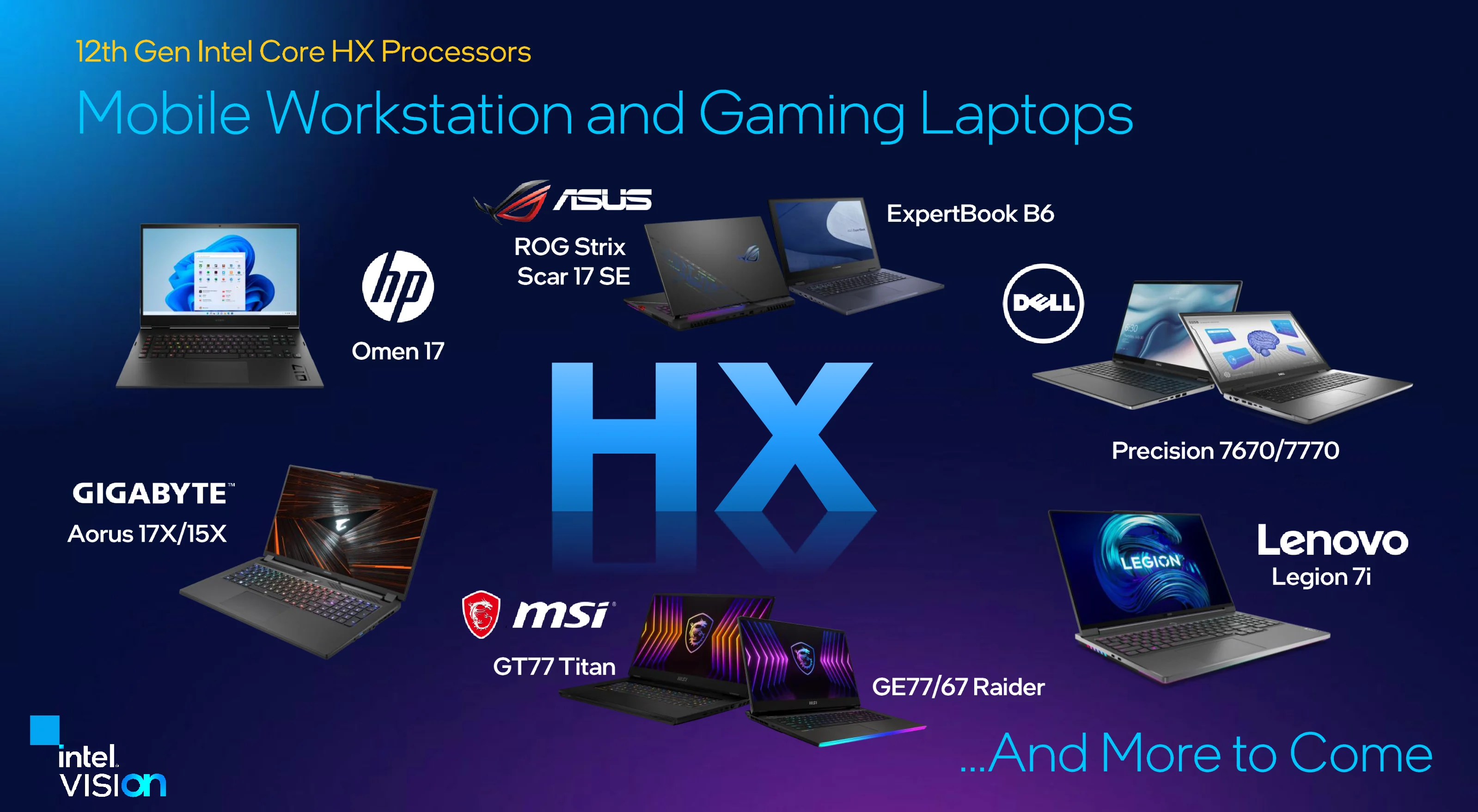
Intel integrated graphics are present in both chips although as expected, the i7 contains the more powerful graphic cores. Both chips are tuned to use around 45 watts of max power although it is possible to step down to converse battery life. Both the i7 and i5 are built on Intel 7 manufacturing standard, which means that it is a 10nm manufacturing process that has feature size that closely matches 7nm in their competitors. Intel decided to abandon their old standard which is based on feature size and a new marketing friendly standard.

Performance
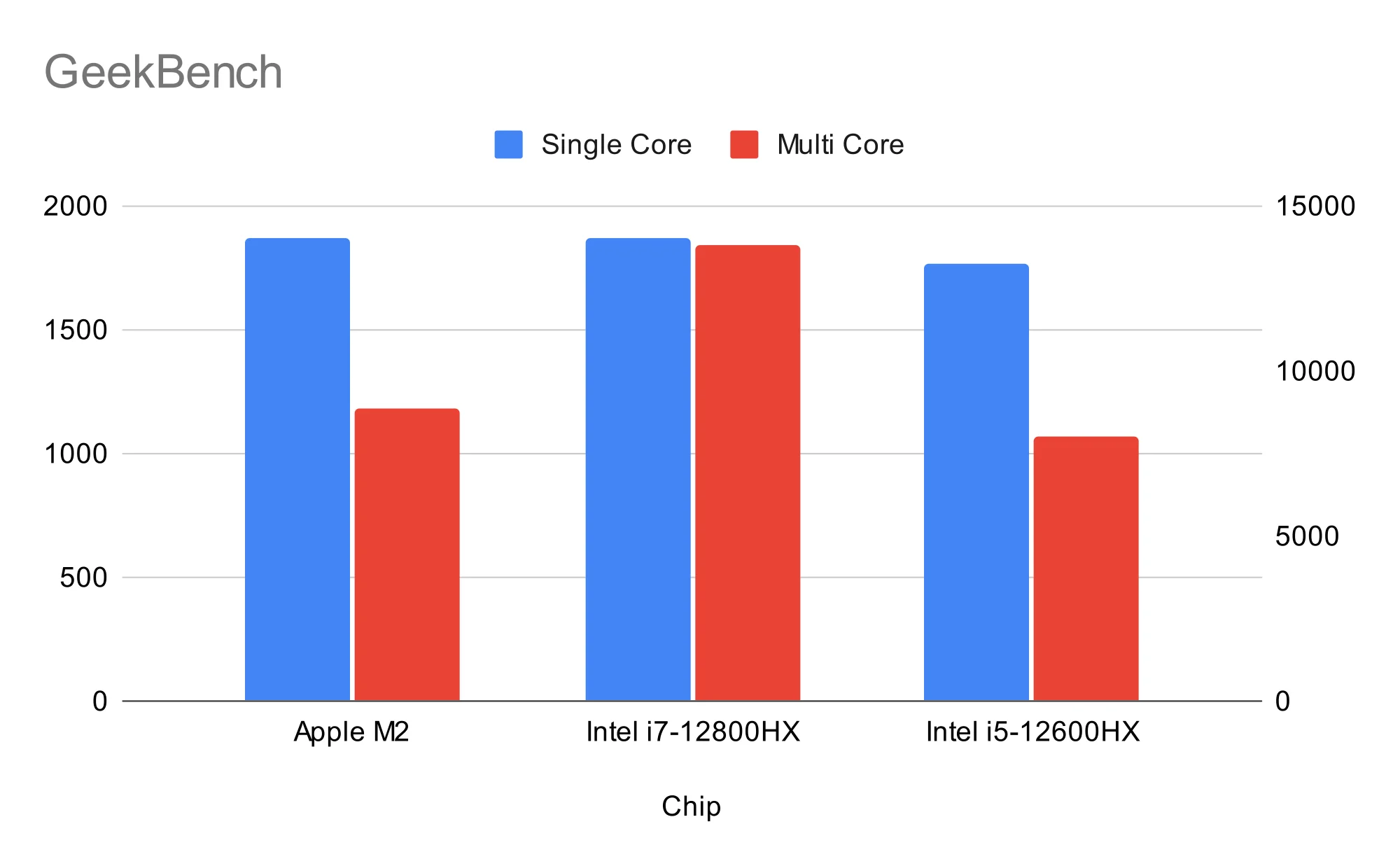
On their own, the Apple M2 is competitive compared to the offerings from Intel. However, there’s a deeper story to this. After all, people who purchase laptops are not system builders, they usually buy the final product.
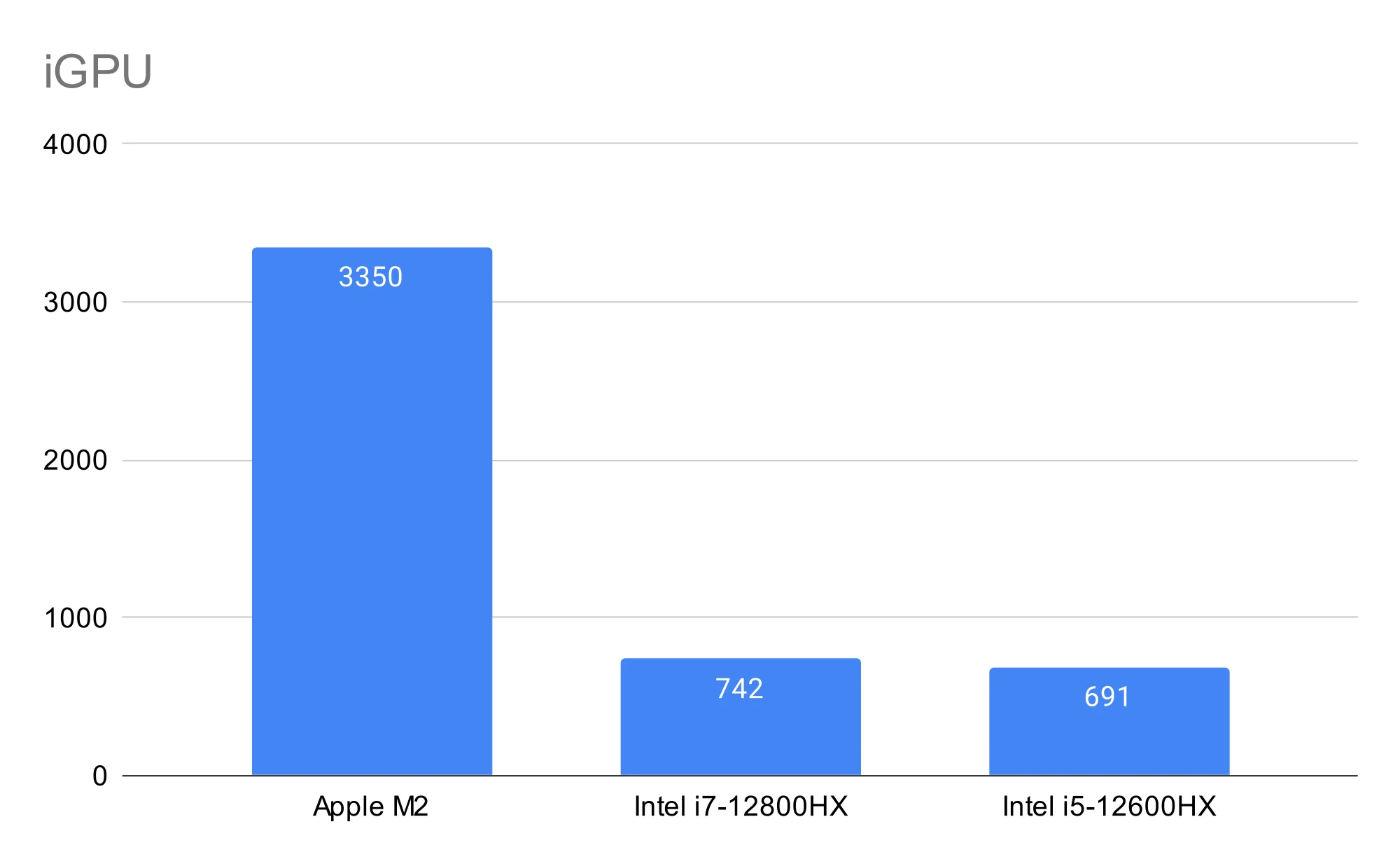
CPU wise, Apple can be as quick as the high end Intel Core i7/i5 HX series. Multi core things are different. The i7 edges out Apple due to the fact the i7 has more cores but the i5 can barely keep up with the M2. Integrated graphics is where there is a stark difference. Both Intel solutions do not hold a candle compared to the Apple M2.
I/O shows the world of difference between company goals. For Intel, it is a chip merchant that supplies basically almost every PC maker on the planet. So the feature set is a laundry list of capabilities built from their customers’ wishlist. Apple on the other hand controls every aspect of the final product: from the plastics that are used for the keyboard to the memory chips that go on the logic board. So the M2 I/O is crafted specifically for the job on hand: Support is only up to dual display because that’s what they think their customers only need, a specific set of memory modules and custom storage chip because they control that aspect too.
The end result is the final product itself: With Apple, you have a sleek, powerful yet highly power efficient laptop that is the MacBook Air. However, you can’t upgrade anything and if you want extra anything after you purchase your device, everything is through the USB-C port. So dongles. Meanwhile, form the Intel Core i7/i5 HX platform, you’ll have a galore of choice but they all share the same theme: it is a gaming laptop that is bulky, power hungry and at the same time very powerful, you need to include discrete graphic solution from Nvidia because the integrated graphics is so weak, you can upgrade memory and storage unit, but the laptop is big and heavy and colorful (thanks RGB!). Sure they are built for different markets, but you’ll know which one the majority will choose for their everyday carry.
Verdict
In conclusion, people buy systems, not chips per se. But the chips is what powers and basically defines the system. So which is the better chip?
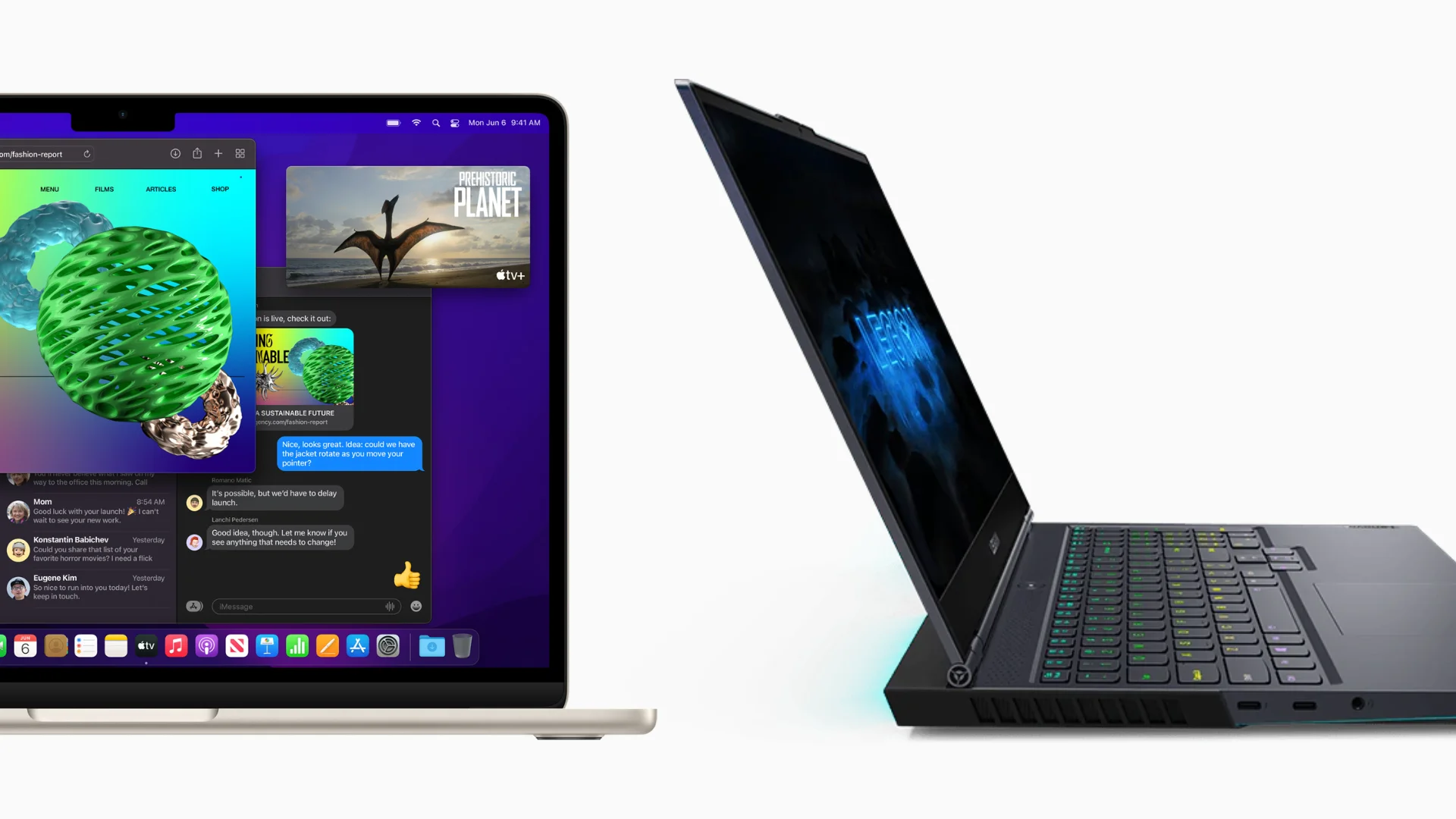
It, in the end, “depends” on your needs. If you want a very good everyday carry and all you do is doing is writing document, working the spreadsheet, finalizing the presentation, browsing the web, watching streaming videos and make some videos from shots that you take with your iPhone, the M2 has got you more than covered and getting a more “powerful” and hungrier laptop that has the Intel Core i5/i7 is not going to make things faster.
The Intel Core i7/i5 HX platform indeed has more everything, but to the average user, it will be wasted because it is unnecessary power hungry. If you spend all day is playing games and editing multi-camera video setup, then of course you will appreciate the extra power that the i7/i5 give, but for the most of us, it won’t matter that much.
Plug
Support this free website by visiting my Amazon affiliate links. Any purchase you make will give me a cut without any extra cost to you
- Mac Mini M1 - Amazon USA / Amazon UK
- iMac 24" M1 - Amazon USA / Amazon UK
- Mac Studio - Amazon USA
- MacBook Air M1 - Amazon USA / Amazon UK
- MacBook Pro 13" M1 - Amazon USA / Amazon UK
- MacBook Pro 14" M1 Pro / M1 Max - Amazon USA / Amazon UK
- MacBook Pro 16" M1 Pro / M1 Max - Amazon USA / Amazon UK
- Accessories:-
- Wireless earphones / headphones:-
- AirPods - Amazon USA / Amazon UK
- AirPods Pro - Amazon USA / Amazon UK
- AirPods Max - Amazon USA / Amazon UK
- Buyer's Guide:-
